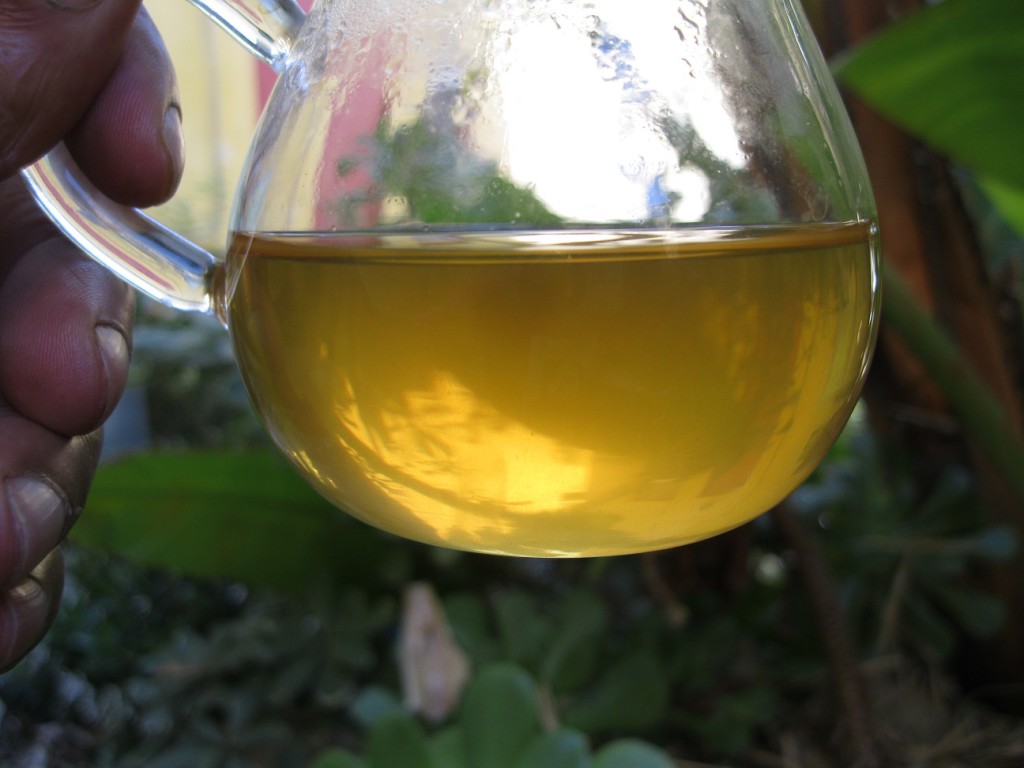Pure Tastiness: ’11 Jing-mai Kilo

The ’11 Jing Mai Kilo is better than what it is. Yours truly is a roguish drinker. I like my brew thick and sweet. Whatever comes with it will depend on particulars but the foundation must always be thick and sweet. This treasure delivers for several solid infusions.
Two chunks of very solidly packed puerh of seven grams were thrown into a 120ml gaiwan. It was allowed to sit for about fifteen minutes after about a 30s rinse. Infusion times were perfect at 10s and water at 195f. All this makes perfect sense. Such tightly packed material requires a greater temp to release its goodness. Lighter packed cakes do not.
It’s easy to tell the difference. At this time and temp, the husky thick brew with a generous offering of smoke has no hint of veggies in it. Don’t get me wrong, I like veggies but I just don’t go looking for the taste of alfalfa and chlorophyll in my tea, especially puerh. I learned something about this vegetal taste being a sign of scorching the tea from an epicurean master located somewhere in Malaysia I believe. The impression rings true for this junky and, in following this master, I’ve returned to using much lower temperatures for lightly packed young puerh. It’s make a marked improvement in how the leaf material delivers irrespective of quality.
High grade Jing Mai Mt productions are exquisitely floral with varying amounts of bitterness. This brew does not meet that standard by a long shot. On the contrary, it is smoky like a Lapsang Suchong. Unlike Lapsang, however, it is very sweet, possessing a cane sugar sweetness along with an oily thick viscosity. Yum.
After seven infusions, the leaf material was agitated. Those chopped bits are nothing to write home about but they give off a fragrant sweet and smoky aroma. The clarity is decent, far from murky but not quite sparkling either. All told, this little gem was pushed for 13 infusions. All the while, the broth remained thick, smoky, and sweet with a slight emergent bitterness that was more a compliment than a mark of the leaves being pushed beyond their capacity.
As an aside, the ’11 Jing Mai kilo poses an interesting contrast to the ’11 Bulang Green Brick, a similarly styled smoky and long lasting offering by Xing Hai Tea Factory. On all accounts of thickness, sweetness, and smokiness, they are both very similar. The cha-qi and durability of the latter are stronger and it costs twice as much. Finally, although both are tightly packed bricks, the Bulang Green Brick has next to no stems and separates from the brick more easily. Those familiar with Xia Guan offerings might find some similarities as well. One big difference, however, is that Xia Guan’s material is from the Da Li, Wu Liang Mt region, which has characteristic medicinal notes.
